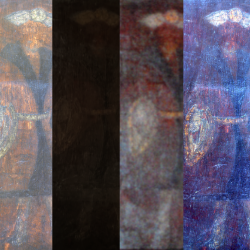-
Study
-
Quick Links
- Course Search
- Fees and Funding
- Unlock Your Potential
- Still time to Apply
- Higher and Degree Apprenticeships
- Continuing Professional Development
- Still time to apply
-
Undergraduate
- Application Guides
- UCAS Exhibitions
- Foundation Years
- School & College Outreach
- Information for Parents
-
Postgraduate
- Application Guide
- Postgraduate Research Degrees
- Flexible Learning
- Change Direction
- Register your Interest
-
-
International
International
Northumbria’s global footprint touches every continent across the world, through our global partnerships across 17 institutions in 10 countries, to our 277,000 strong alumni community and 150 recruitment partners – we prepare our students for the challenges of tomorrow. Discover more about how to join Northumbria’s global family or our partnerships.
View our Global Footprint-
Quick Links
- Course Search
- Undergraduate Study
- Postgraduate Study
- Information for Parents
- London Campus
- Northumbria Pathway
- Cost of Living
- Sign up for Information
-
International Students
- Information for Students
- International Events
- Application Guide
- Entry Requirements and Education Country Agents
- Global Offices
- English Requirements
- English Language Centre
- International student support
- Cost of Living
-
International Fees and Funding
- International Undergraduate Fees
- International Undergraduate Funding
- International Masters Fees
- International Masters Funding
- International Postgraduate Research Fees
- International Postgraduate Research Funding
-
International Partners
- Agent and Representatives Network
- Global Partnerships
- Global Community
-
International Mobility
- Information for Northumbria Students
- Information for Incoming Exchange Students
-
-
Business
Business
The world is changing faster than ever before. The future is there to be won by organisations who find ways to turn today's possibilities into tomorrows competitive edge. In a connected world, collaboration can be the key to success.
More on our Business Services -
Research
Research
Northumbria is a research-rich, business-focused, professional university with a global reputation for academic quality. We conduct ground-breaking research that is responsive to the science & technology, health & well being, economic and social and arts & cultural needs for the communities
Discover more about our Research -
About Us
-
About Northumbria
- Our Strategy
- Our Staff
- Place and Partnerships
- Leadership & Governance
- Academic Departments
- University Services
- History of Northumbria
- Contact us
- Online Shop
-
-
Alumni
Alumni
Northumbria University is renowned for the calibre of its business-ready graduates. Our alumni network has over 246,000 graduates based in 178 countries worldwide in a range of sectors, our alumni are making a real impact on the world.
Our Alumni - Work For Us
What will I learn on this module?
You will learn and apply the principles of visual design relevant for Digital Design students. These include principles of typography, semiotics, design styles and movements, grid systems, photo composition and manipulation, communication theory, colour theory and information design across different formats, sizes and scales.You will be given the opportunity to put these skills into practice through a design brief.
How will I learn on this module?
You will be given a brief at the start of the module and will be expected to work throughout the module towards a final design piece, collaboratively and individually. The weekly content delivered will enable you to develop a range of visual design skills that will help you answer the brief. The final deliverable will be a piece of print and/or digital version visual communication piece (for example this could be a magazine, book, poster, Instagram feed et al). More specific details of the requirements (format, size etc) will be available in the design brief. You will also be asked to submit a portfolio which includes your design process (research, ideas generation, design development, refinement and outcomes).
Each week is structured around a theme – for example one week we might focus on how to use type, while another week is focused on how images are used to communicate a message. Each week will start with a short lecture to introduce you to the topic, covering a range of historical, contextual and practical knowledge. There is usually an in-class exercise to help you explore some of the principles introduced in the lecture and technical support sessions. The rest of the sessions will be spent discussing your project and helping you make progress in the project brief.
How will I be supported academically on this module?
Your module tutors will provide extensive support in various forms, including lectures, seminars, workshops, and tutorials.
Each module kicks off with a comprehensive briefing that outlines the expected learning outcomes, module requirements, and a detailed schedule.
You will also have regular weekly sessions in a studio setting to structure your learning experience. In these sessions, you’ll participate in group discussions to receive feedback from your peers and tutors.
Furthermore, you’ll receive tailored feedback during tutorials before you submit your work, helping you polish and enhance your project work for successful module completion.
What will I be expected to read on this module?
All modules at Northumbria include a range of reading materials that students are expected to engage with. The reading list for this module can be found at: http://readinglists.northumbria.ac.uk
(Reading List service online guide for academic staff this containing contact details for the Reading List team – http://library.northumbria.ac.uk/readinglists)
What will I be expected to achieve?
Knowledge & Understanding:
• LO1 Knowledge of visual design principles, methodologies, standards and practical theories that underpin contemporary visual communication KU1
• L02 Show proficiency in the appropriate use of industry standard graphic design software and design techniques in physical and/or digital environments. KU3
Intellectual / Professional skills & abilities:
• LO3 Demonstrate evidence of creative thinking through iterative exploration and communication of multiple design ideas through visual examples and presentations IPSA2
• LO4 Show self-knowledge of personal development in relation to visual design principles IPSA4
Personal Values Attributes (Global / Cultural awareness, Ethics, Curiosity) (PVA):
• LO5 Demonstrate idea generation that supports creative risk-taking in your design development. PVA1
How will I be assessed?
You will be assessed both formatively and summatively:
You will be assessed formatively, using verbal feedback during timetabled sessions at key stages of the design development process.
You will be summatively assessed at the end of the module through the submission of a:
• Component 1:50% Design development process book
MLOs : 3 4 5
• Component 2: 50% Design portfolio (which will include design prototypes and artefacts).
MLOs :1 2
At this summative stage you will receive initial verbal feedback during your presentation, followed up with additional written feedback on your design process book and design portfolio submission.
Pre-requisite(s)
N/A
Co-requisite(s)
N/A
Module abstract
The purpose of the module is to introduce you to the core principles of visual design. Both in the form of design production skills, for example: typography, layout and grid, composition, image manipulation, alongside key visual communication tools like semiotics, colour theory, design styles and movements.
You will gain a practical understanding of how to turn visual ideas into attractive and appropriate visual communication pieces through the sensitive usage of typography, image, colour, language and text. In the process you will also learn how to operate industry standard software including, but not limited to, Adobe Illustrator, Photoshop and InDesign in order to create visually stunning and effective visual communication pieces.
Teaching will be carried out through a blended mix of online and live lectures, technical demos, workshops, seminar group discussions and tutorials. Formative assessment will be provided through seminars, tutorials or formal presentations. You are required to submit a design process book demonstrating your work process and a final design piece in response to the brief, which will form part of your summative assessment .
Course info
UCAS Code W200
Credits 20
Level of Study Undergraduate
Mode of Study 3 years Full Time or 4 years with a placement (sandwich)/study abroad
Department Northumbria School of Design, Arts and Creative Industries, Northumbria School of Design
Location City Campus, Northumbria University
City Newcastle
Start September 2025 or September 2026
All information is accurate at the time of sharing.
Full time Courses are primarily delivered via on-campus face to face learning but could include elements of online learning. Most courses run as planned and as promoted on our website and via our marketing materials, but if there are any substantial changes (as determined by the Competition and Markets Authority) to a course or there is the potential that course may be withdrawn, we will notify all affected applicants as soon as possible with advice and guidance regarding their options. It is also important to be aware that optional modules listed on course pages may be subject to change depending on uptake numbers each year.
Contact time is subject to increase or decrease in line with possible restrictions imposed by the government or the University in the interest of maintaining the health and safety and wellbeing of students, staff, and visitors if this is deemed necessary in future.
Useful Links
Find out about our distinctive approach at
www.northumbria.ac.uk/exp
Admissions Terms and Conditions
northumbria.ac.uk/terms
Fees and Funding
northumbria.ac.uk/fees
Admissions Policy
northumbria.ac.uk/adpolicy
Admissions Complaints Policy
northumbria.ac.uk/complaints









